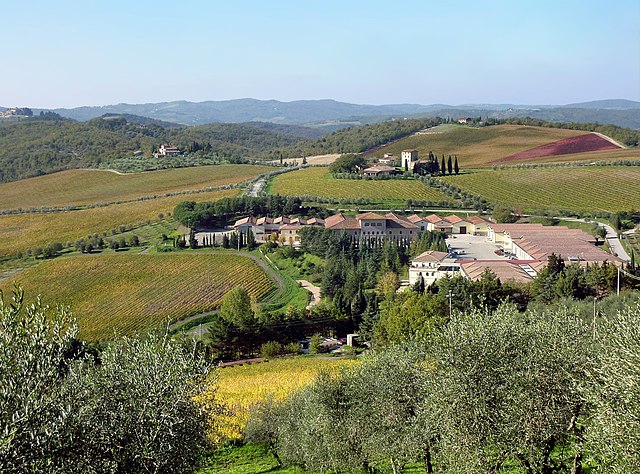The August 1 global tariffs deadline by the United States has prompted Italy’s classic Chianti wineries try to carve out elsewhere.
According to Aska News Italia on July 16, 2025, Consorzio Vino Chianti from Tuscany in west-central Italy intends to explore new markets.
The consortium says it won’t indulge in self-pity. This was in reference to the U.S. as Italy’s biggest wine market, worth €1.76 billion ($2.04 billion) in 2024.
Northern Italy’s Veneto-Friuli wine maker Prosecco in particular enjoys 30% annual export share to the United States, at €500 million ($581.2 million).
According to Reuters, the company is hoping that the uncertainty of shuffling dialogues across the Atlantic will have a final resolution.
Ongoing letter-based diplomacy with President Donald Trump has fostered uncertainty and lured the Chianti consortium trial uncharted waters.
Potential in the Americas, Asia
Vino Chianti’s president, Giovanni Busi has already delineated South America, Asia and Africa as pivotal export markets. Out of these, Brazil, Uruguay, Paraguay and Argentina apparently have the most growth momentum.
Chianti wineries says it will leapfrog these markets via a trade deal between the European Union (EU) and Mercosur (Paraquay, Brazil, Uruguay and Argentina).
Busi also cited uptick demand in Asia, especially China, Vietnam, Taiwan and Japan, whose potential lies in advertising.
Africa
Furthermore, Africa has growing potential in the wine business, led by South Africa with its own world-beating Cape vineyards.
Exporting Italy’s wine to competitor South Africa could be challenging unless it begins as a specialty process targeting niche retail.
Like Italy, South Africa is wallowing in the mire of 30% tariffs. This is despite the U.S. being the fourth biggest packaged wine market for SA at 8,717,265 liters per year (2023).
Beyond, Italy can exploit Ghana, Kenya, Angola, Zanzibar, Nigeria and Namibia as tourist hubs with negligible home vineyards.
So, as Chianti and other wineries in Italy contemplate Trump’s letters to nip tariffs, new markets are emerging. To extend the story further, below are highlights of the famous Italo wine.
Italy Wine and Chianti Wineries Statistics
Italy is a top 2 global wine exporter of mainly specialty Chianti, sparkling and other blends to over 140 nations. Between 2004 and 2024, exports expanded by 188%, according to Italian Food. As of 2024, the United States commanded the top imports’ slot, at €1.76 billion ($2.045 billion). Following suit were Germany, the UK and France at €1.19 billion ($1.38b), €843 million ($979.8m) and €316 million ($367.3m), respectively.
Italy produces around 41 million hectoliters of wine per year, according to a 2024 estimate by Ismea and Assoenologi. Veneto in northern Italy provides 26.2% of the national wine stock, as of late 2024, while the entire northern region represents 61.7%. In terms of processing companies, Presecco dominated the October 2024 harvest with 4.2 million hectoliters,. A bulk of this would end up in the United States with a 30% export share.
Leading in international popularity among Italo wines, is Chianti wine – a red specialty type. It comes from mainly the Sangiovese grape variety of middle Tuscany, in central-northern Italy. Originally, the wine contained 100% Sangiovese grapes but nowadays can blend with at least 70% Sangiovese.
How big is the Chianti wine vineyard area in Italy?
There were over 46,700 acres of Chianti-oriented wine grape groves in mainly Tuscany in 2024. Of these, 34,000 acres were for Chianti DOCG and 12,700 acres for Chianti Classico wine, according to the Wine Enthusiast. Although the acreage is a pittance against the national all-wine vineyard area of 674,000 hectares, it produces a quality beverage.
